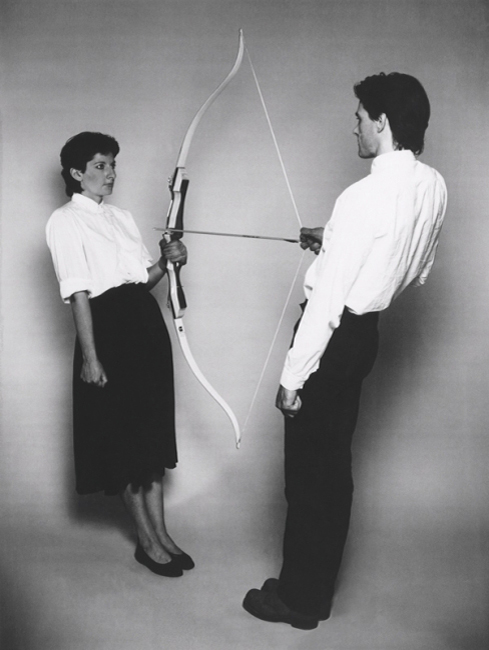Exhibitions
To visit the website of the previous biennial (BIP2010), click here.
Conception par Alinoa.
Marina ABRAMOVIC et ULAY

© Marina Abramovic, SABAM Belgium-2012
|
Marina ABRAMOVIC Born in 1946 in Belgrade (Serbia). ULAY (Uwe Laysiepen) Born in 1943 in Solingen (Germany). |
In twelve years of living and working together, Marina Abramovic and Ulay have explored all the parameters that drive the dynamics of a relationship, and this through the prism of the body. In a perfect balance between the symbolic and the cathartic, each of their performances takes a look at, and redefines, the concept of the alter ego. The timeless character of Relation Works by Marina Abramovic and Ulay is the contemporary manifesto of the "couple makes art".
The two artists’ first performance, Relation in space, was in July 1976 at the Venice Biennale. For nearly an hour, Marina Abramovic and Ulay, ran naked towards each other, brushing each other at first, and then with increasing rapidity and intensity, colliding with one another. The first part of a total set of 68 performances, Relation in space defined the operating field of duality discussed here in terms of the magnetic polarities of the body and its impulses. It also set the parameters defining the principle of Relation Works or, in the words of the two artists, "no fixed location, direct contact, taking risks, constant motion, no repetitions or reruns". Then came performances such as Imponderabilia (1977), where at the inauguration of an exhibition, they stood naked opposite one another in the doorway overlooking the museum. In order to enter the museum, the members of the public had to face one or the other of the artists. There was also Relation in time (1977), which used the concept of duration. In it, Marina Abramovic and Ulay stood back to back, their hair tied together by a bow. After sixteen hours spent sitting motionless, the public was invited to return to the intimacy of the room and watch the rest of the performance that lasted another hour. The vitalist act, which took the microstructure of the relationship as a place of reflection, acquired a universal dimension here by the contraction between force and the minimalism of gesture. Many aspects of the radicalism of their approach are consistent with the tenets of numerous Eastern philosophies such as Zen and Buddhism. To this day Marina Abramovic continues work that is explicitly categorized in this branch, saying she wants "the body to become a tireless material thanks to survival energy". In all their performances – the artists themselves qualify them as "edited life and choreographed existence" - they stigmatize the fundamental problem present in the collective unconscious and "myths" relating to the construction of the couple. Their entire work of art is like a long tracking shot on overcoming the mirror stage and the concept of gender. At a time when the media - without any emotional ethics - is showering us with entertainment that constantly feeds an extreme form of narcissism in parallel with comparative discussions on sexual categories, this work of art offers a very interesting insight. Taking the relationship as the sphere of investigation here, the body used as the sole instrument of discourse defies the concept of identity related to sexual attributes. The relationship with silence is also of existential content. Most of Marina and Ulay’s performances do not use words. Rather than being considered theatrical, they primarily fall into the domain of ritual.
(From the article by Stephane Roussel, published in the journal Le Passant Ordinaire, No. 50, October-December 2004.) Rest Energy (1980) is part of the Relation Works cycle. For four minutes, Marina Abramovic holds the handle of a bow and Ulay holds the rope, his gloved right hand holding an arrow that could at any moment be sent into the heart of his partner/ opponent should he lose his concentration or balance for just a second. The heart beat amplified by a microphone accelerates throughout the experiment. AFL/AFH |
<< Next artist | Marina ABRAMOVIC et ULAY | Previous artist >>

